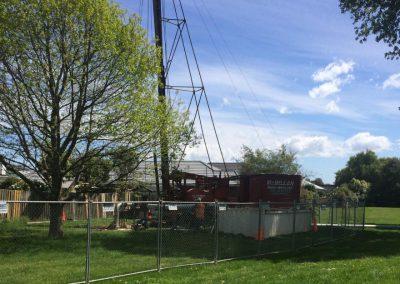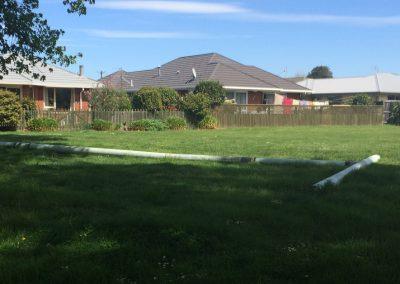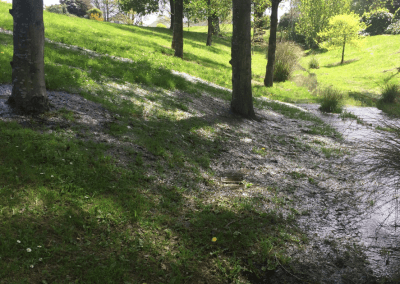Specific Tasks
Bores
What, and issues to look out for
What
To ‘bore’ means to create a hole or tunnel by using a drill-like motion with a tool called a bore. Bore establishment and development is often a significant source of sediment in our waterways. This can often be avoided by using the tools below to keep sediment out.
Issues to look out for
The boring itself often discharges very fine sediment that can be difficult to capture. Each site will be different and have different constraints. Look at all options for your site and how effects can be avoided. Use the mix and match, treatment train approach to do whatever is practical to achieve the best water quality possible in the situation.
Design essentials
- Comply with Permitted Activity rules, resource consent requirements and limits on the volume, quality and duration of discharges.
- If you are establishing the bore on rural land, and/or there is a large space around where it is being developed, it will usually be best to discharge all sediment-carrying water to land, away from waterways. In urban environments, available land is limited so you will need other techniques.
- Discharge clean water which is free of sediment – for example from step testing – directly to a waterway, bypassing bare areas or places where it could pick up contaminants.
- Discharge this water so that it doesn’t cause scour the bed or banks of the receiving waterway. Cover the bank and bed (and enough distance downstream) where this water is to be discharged, by pinning down geotextile or placing large cobbles, to reduce this risk.
- Consider discharging it into the stormwater network, if available and authorised by the relevant local authority.
- You may need to cease the discharge if rainstorms are forecast, to avoid compromising network capacity.
- Where possible, use a treatment train approach for dirty water. If using a settlement tank, keep the flow into the tank is as smooth and turbulence-free as possible by running the flow along an entrance plate or baffle. The smoother the incoming flow, the better the treatment. Don’t let water fall or tumble into the tank because this will stir up any sediment trying to settle and reduce the tank’s effectiveness.
- Investigate and use coagulants/flocculants, where possible.
- Discharge outflow from bore development (including from a settlement tank) over grassed land before allowing it into water, where there is land available and it is allowed. This may help settle out some of the remaining fine sediments. Protect stream bank margins with silt socks when you do this.
- Consider using compost blankets as a sediment capture tool – these have huge sediment capture potential and also protect the ground from erosion. In this example, water discharging over land passes through a compost blanket before it goes into the stream. Place at least 5 cm of compost in a blanket on the ground over which water is to flow.
- Understand the terrain that you’ll be discharging onto, avoiding points where flow could be concentrated. Aim for wide sheet flow.
- Be aware that you may need to stop discharges during rainstorms to provide for normal capacity in the stream or network.
- Monitor performance so you understand how your work is performing. This will help you identify when things are working and when you need to improve. Use the tools in the monitoring and sampling section to pick the right tools for your project.
-

Bore development—rig and settlement tank.
-

Dirty water from bore establishment passes through a sediment settlement tank before discharge onto well-grassed land. Water should enter the first chamber smoothly to maximise sediment settling. To do this, force the water against a sloping plate.
-

Bore development water discharged onto grass through a level spreader, prior to it going into a local stream. It has already passed through a settlement tank.
-

Bore development water passing over land and into a stream. Avoid terrain that will concentrate flows and install tools to protect soil—filter socks and compost blankets.